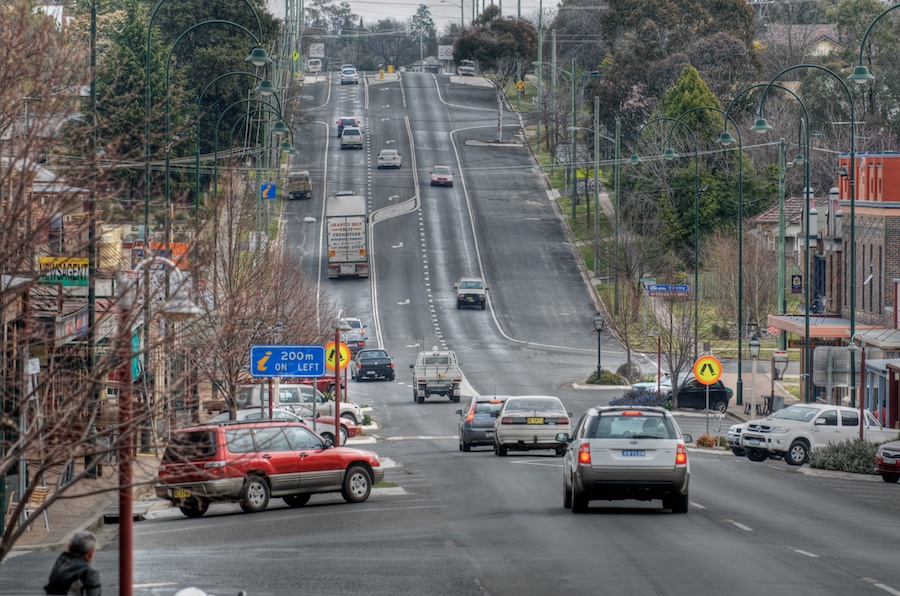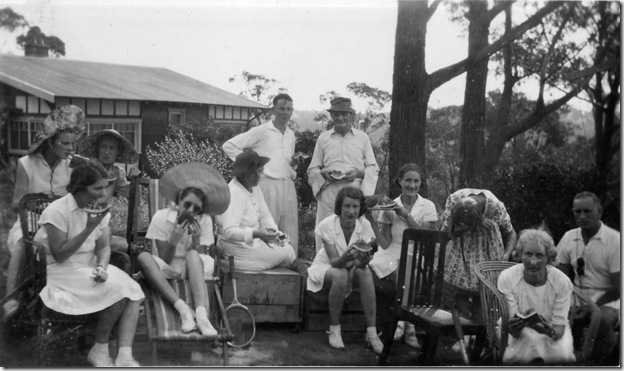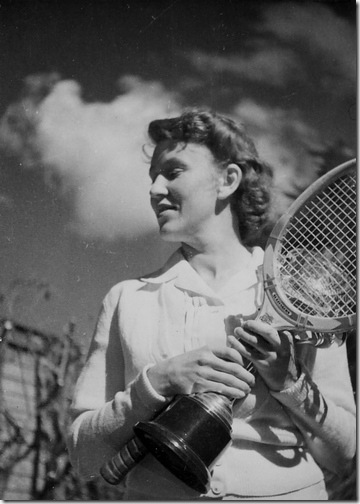This post began as a Wednesday Forum discussion, but was then delayed until today by other pressures. This then allowed me to read David Whitley's piece Sorry Australia, Europe rules. He compares Australia adversely to Europe, suggesting that things like the Opera House cannot compete.
I agree with him. Indeed, I have written about the new love affair that many Australians have with Europe. I have written about the trails that our young follow through Asia. Australia as a new country cannot match the history and accumulated experiences, the very exotica, When the Sydney glitterati want to promote the city's museums, its cafes, they are no different from a country mayor who wants to promote a local park. The park may be nice, but it is not a draw in its own right. Both are blinded by the wrong comparison.
I also agree with his conclusion:
These things (the European attractions) are always going to appeal. There's nothing Australia's tourism authorities can do about them – but they can differentiate and sing about what Australia does do better instead.
If the broader new state New England is to attract increased visitor traffic, it has to focus on its unique features, those things that are distinct. Those things are not the same as Sydney.
The history, the geography, the style are all different. So long as New England is merged with, subordinated to, tourism promotion based on Sydney then we will fail. And so will Sydney.
We can see this is the failure of NSW tourism promotion and the two brand strategy - brand Sydney on one side, brand NSW on the other - over a very long period.
The NSW Government's attempts to promote Sydney as a global city, as a cosmopolitan global centre, fail in international terms because it puts Sydney in competition with a London or New York, a Singapore or Shanghai, and Sydney fails this test. In domestic terms, the Melbourne or Adelaide promotion of life style attracts domestic visitors, Crudely, Sydney is reduced to a bridge, an opera house and a harbour.
Elsewhere in NSW the position gets worse because NSW has no identity. If you look at international tourism promotion, Sydney itself gets a guernsey, but the rest of the state might as well not exist. If you look at domestic promotion, NSW is the only state without any form of definable tourism identity. Yes, that's right, the only one.
Try this test.
Ask people that you meet what are the key tourism features of each state, the few words that describe it from a visitor perspective. I bet you, the only words you get for NSW will be a few Sydney based attractions. All the other states will attract words linked to experiences.
New England suffers particularly because its identity is not recognised. We do have our own history, we have our complex life styles, we have great variety and attractions. Each is served up in fragments in the ill-defined stew that is NSW.
Many of us had hoped that the new NSW Government would address some of our concerns. At least so far as tourism is concerned, we now have enough evidence to suggest that it will follow the same path as before. I stand to be corrected, but I know of nothing in current plans that will aid us.
As before, the tourism strategies are fragmented and effectively deny our identity. Our history and special features are simply ignored.
Is is possible to have a unique New England brand? Certainly it is. This would centre on the North, the emergence of New England, our 150 year fight for statehood. It doesn't matter whether you agree with self-government or not, it's a unifying story.
New England tourism promotion would start with a central identity, but then focus on the promotion of difference, putting this in a broader New England context. Newcastle, for example, would emerge from the NSW imposed shadows as a distinct centre in its own right. The different New England wine regions would be promoted as an entity and in their differences.
How can you promote NSW wine when there is no unity, when people must choose one area but not another? In Victoria and in New England it is possible to do an integrated wine tour.
In Victoria, Geelong has established itself as the national wool centre from a museum perspective. Yes, the Western Districts are important, but so is wool in New England. Yet who would know?
I could go on, but will pause here with a plain statement.
If the NSW Government really wants to help New England tourism, then it must focus on the promotion of New England as an entity. This implies largely doing away with brand NSW and instead focusing on the promotion of the broader geographic entities making up NSW. If it can't do this, then let us go our own way.
Postscript
A brief response to some of the issues raised with me on this post.
First, by new state New England I mean the Tablelands, the coast, the Hunter, the Western Slopes and Plains, not just the Tablelands.
Next.
Surely David Whitley's comment on Australia as a whole applies to New England? What makes you think that a New England brand could attract international visitors in its own right?
That's absolutely right. In the medium term, say ten years, a New England brand would be unlikely to attract significant international traffic in its own right. What it would do is to increase our share of visitors already coming plus make a small incremental contribution to the totality of Australia's international tourism promotion.
We have to keep a sense of perspective. A Rhodes or a Santorini already attracts more international visitors in their own right than the totality of New England's international visitors because of history, romance and closeness to Europe. We are talking about a slow build process.
What's New England got that would attract visitors compared to other parts of Australia? They have beaches, national parks, festivals etc. They have far better developed tourist attractions. Why should people bother going?
Sigh. I actually get this type of comment from Sydney dwellers quite a bit. Many of those living in Melbourne, for example, don't even know where the place is. Yet we have some of the best attractions and locations in Australia.
Alright, what would a New England tourism strategy look like? Why would it work?
In considering this we need to take two things into account:
- Visitors are attracted by a total experience. That takes time to build.
- Low visitor numbers to many parts means that New England tourism economics are severely constrained. We presently don't have the spend to support basic infrastructure or visitor related activities. Again, this takes time to address.
In terms of markets, a New England tourism strategy would:
- Promote New England to locals to encourage greater internal traffic. Do you know, there are Newcastle people who have never visited Armidale, Armidale people who have never visited Newcastle? There are new arrivals in some coastal centres that have never been over the ranges. And so it goes on. Towns don't sell to each other, they sell against each other. Glen Innes could probably double its total Celtic festival visitors from Armidale alone. How many Armidale people know about Inverell's Pioneer Village? Or have been to Timbertown? Internal promotion - taking in each other's washing if you like - can help improve economics and add to the human experience for locals and visitors alike.
- Adopt a highly segmented approach taking geography and travel time into account. For example, Tenterfield would promote itself in its own right - Henry Parkes, Tenterfield Saddler, etc. It would be promoted as an extension of the Granite Belt to attract add-on visitors especially from Brisbane, but also be promoted as part of the New England geographic wine region. Tenterfield should cross-sell, encouraging its visitors to go to Stanthorpe and the Granite Belt for wine, to drop down to the Richmond and Tweed valleys, mentioning Armidale in the context of Peter Allen.
- Adopt a thematic, niche, special interest approach linking different parts of New England. Wine, railways, mining, whatever you like. Anything that appeals that would also get people to travel more broadly within New England once they are there.
- With all this unified within a central New England brand.
The coordinating promotional role would involve, among other things:
- Promotion of the central brand.
- Coordinated campaigns based around key themes.
- The use of tourism facilitators whose role would centre in part on encouragement of cooperation at local and regional levels within the broader New England.
A key feature of the central role would be a focus on and promotion of difference, of features unique to specific localities or areas. Parochialism is deeply entrenched within New England. It should be used as an asset, not liability.
Postscript 2
Greg Commented:
Jim, I read this article yesterday and what struck me was the Sydney/Melbourne centric viewpoint. There is so much more to Australia than just two cities. Let's face it, if you are from the northern hemisphere and you want the experience of a cosmopolitan world city, then travelling half way around the world to Sydney is not going to be high on your list.
There was also the disparaging comments about our smaller cities eg. Newcastle, Wollongong, Ballarat and Bendigo, being vastly inferior to the many European small cities eg. Oxford, Cambridge and Bath. The logic seems to imply that because our smaller towns and cities lack 1000 years of history and mediaeval architecture that they are simply not worth visiting. What an appallingly narrow minded comment.
What we do have is an entire continent out there with a multitude of different destinations, all with their own unique landscapes and stories.
We can never compete with Europe if your interest is castles and cobbled streets, but that is not necessarily everyone's ideal holiday experience. Our own tourism authority could market and leverage off our own unique strengths. Our climate, unique landscapes, laid back lifstyles and our own story - something that you simply cannot experience anywhere else.'ll mention Newcastle, because it is obviously what I know best. Where else on earth can you experience world class beaches, a large coastal lake, the bays, sand dunes and blue water of Port Stephens, world class wine districts, ancient rainforests and a climate ranging from subtropical to alpine in the highlands of the Barringtons - all between 2 minutes and 2 hours of the city CBD? You would think that would be a tourist marketers dream. Yet if you relied on NSW Tourism website you might never know most of it existed.
Postscript 3
The Sydney Morning Herald (29 October) carried an interesting piece by Sean Nicholls Cashed up, curious - now to get them on the plane on the plans of Destination NSW. If you read the piece, you will see the same use of ambitious targets (double the money spent by tourists in NSW in 2020); the same focus on what are perceived as golden markets, in this case China and to a lesser extent India; the same ambivalence and confusion between Sydney and NSW; the same focus on big ticket events; and an apparent disconnect between target and activities.
In fairness, Destination NSW is presently developing a strategic plan to achieve its objectives. Perhaps we should wait and see. However, having watched multiple planning processes over decades, I don't feel confident.

















